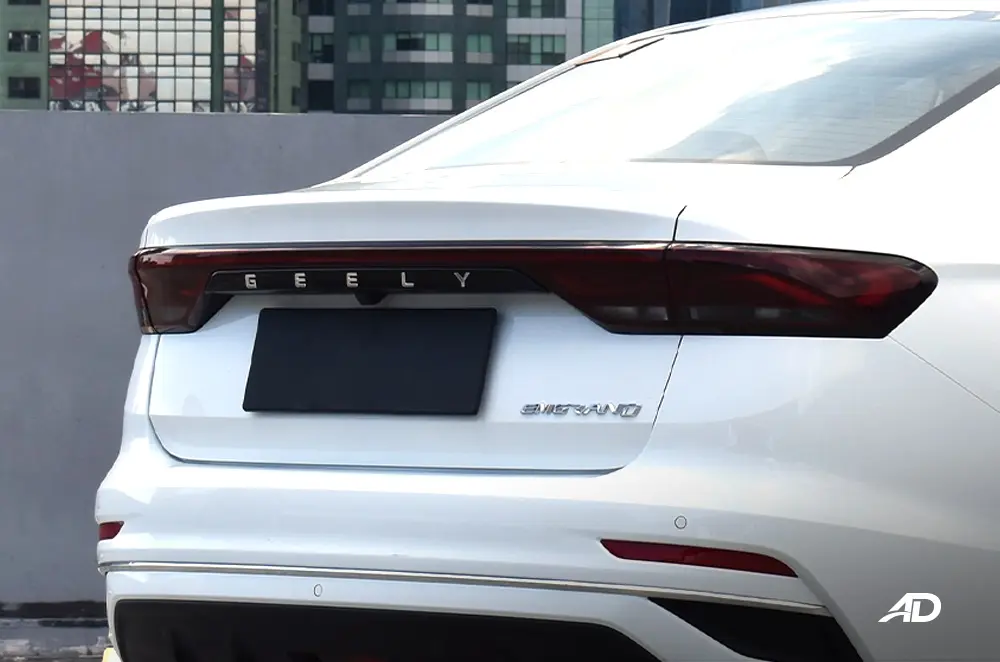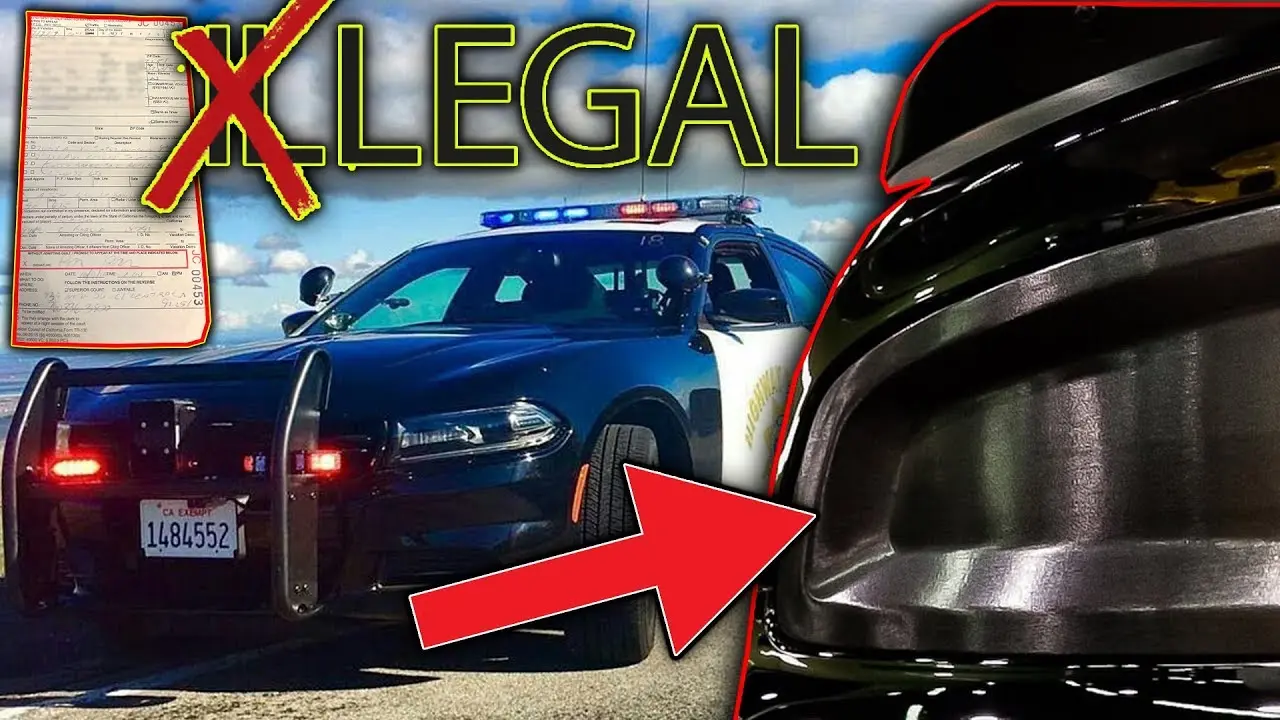When it comes to modifying car headlights and taillights, it's important to understand the legal requirements. All states have regulations in place that dictate the standards for vehicle lighting. Not all aftermarket lighting products meet these requirements, which can result in legal consequences such as receiving a ticket. In this article, we will explore the legality of smoked tail lights and provide an overview of the laws related to car lighting modifications.
What Makes a Tail Light Street Legal?
Most regulations regarding headlights and taillights focus on color and brightness restrictions. In compliance with federal recommendations, all states require that headlights be white or amber in color. It is generally illegal for any other color of light to be visible from the front of the vehicle. This restriction applies to roof lights, underglow, and lighting in the engine compartment. The reasoning behind these color restrictions is to prevent confusion with emergency vehicles. To ensure compliance, it is recommended to use only headlights and taillights with a dot-approved sticker.
Advertisements for blue headlights that are DOT-approved may be misleading. These lights do not emit a true blue color but instead produce a pure white light that appears slightly blue. As long as these aftermarket headlights do not exceed brightness laws, they are considered legal to use.

Modifying the color of taillights is generally prohibited. Vehicles must have only two brake lights, which must be red in color. Any customization of the taillight color is typically not allowed. However, overhead brake lights, backup lights, or truck-bed lights are usually permitted but optional.
Brightness regulations for headlights are primarily governed by federal rules. The luminous intensity of headlights must fall between 500 and 3,000 candelas, as stated in the Code of Federal Regulations (CFR). Headlights that are labeled as DOT or SAE approved are considered legal in all 50 states.
Taillights are also subject to brightness limitations, but since they must be red in color, they rarely violate these limits. It is important to ensure that any custom or aftermarket taillights are DOT or SAE approved.
Some car owners may choose to add lights to the roof, chassis, or interior of their vehicles. However, these modifications can potentially violate federal regulations as well as state-specific laws.
Most states prohibit the use of flashing or strobe lights on non-emergency vehicles. This restriction includes any lights visible from the exterior, including roof lights, underglow, and even interior lighting.
Since lights visible from the front of a vehicle can only be amber or white, off-color underbody lights are generally not allowed. Many states also have restrictions on the brightness, visibility distance, and times of use for underglow lighting. These limitations are in place to prevent confusion with emergency vehicles.
While few state laws specifically address interior lighting, it is important to note that off-color interior lights that are visible from the front of the vehicle can result in a ticket. Some state-specific laws may permit non-red diffused lighting on passenger windows.
Violating lighting regulations is typically considered a non-moving traffic violation and can result in fines. It is essential to comply with these regulations to avoid increased penalties and possible registration revocation. It is important to note that lighting regulations generally apply to all vehicles on public roads and roadways open to the public. Exhibiting light effects while parked in a showroom or private car show is typically not considered illegal.
Why Do People Tint Their Rear Lights?
Tail light tinting is a popular modification that many car owners choose to enhance the appearance of their vehicles. Tinting the rear lights can give a car, truck, or SUV a customized look and feel. It can attract attention and offer that wow factor that many people desire in a vehicle.
There are various methods of tail light tinting, including using a spray-on transparent paint or applying transparent vinyl over the lens. Both methods can yield desirable results, but each has its own advantages and considerations.
Using a spray-on transparent paint is a common method used by some shops for tail light tinting. This method works well for small turn signal and marker lights with multiple grooves or small raised surfaces. However, it requires the vehicle to be kept overnight to ensure that each light is completely dry. Additionally, the lights must be removed from the vehicle to avoid painting the vehicle itself.
Applying transparent vinyl over the lens is another method used for tail light tinting. This method is quicker and less expensive compared to the spray-on method. It also eliminates the risk of damaging the vehicle's painted surface. In most cases, the installation can be completed while the client waits on the vehicle.

The time required for tail light tinting depends on the vehicle and the shape of each light's lens. On average, the process takes about an hour to an hour and a half for two lights. However, some vehicles and complex lens shapes may require a longer installation time.
Is Tail Light Tinting Legal?
The legality of tail light tinting depends on the specific circumstances and local laws. In general, tail light tinting is legal for off-road vehicles such as SUVs, 4x4 trucks, and Jeeps. It is also permitted for show cars and vehicles used for racing purposes on tracks.
However, for daily drivers, tail light tinting is often not considered legal. Even though it may enhance the appearance of the vehicle, tinted tail lights can result in a ticket. It is crucial to check with local and state agencies to determine the legality of tail light tinting in your specific situation before proceeding with the modification.
DT Services Window Tinting LLC / Carmeltint.com recommends consulting with local and state agencies to ensure compliance with applicable laws before performing tail light tinting. They accept no legal liability and assume that tail light tinting is being done for off-road purposes only if they perform the service.
Understanding the legal requirements for modifying car headlights and taillights is crucial to avoid legal consequences. While smoked tail lights may enhance the appearance of a vehicle, they may not comply with the regulations in many states. It is important to ensure that any modifications made to the color or brightness of headlights and taillights are DOT or SAE approved. Additionally, it is advisable to check with local and state agencies to determine the legality of tail light tinting in your specific circumstance. Compliance with these regulations will help ensure a safe and legal driving experience.
If you want to know other articles similar to Are smoked tail lights illegal? understanding car lighting laws you can visit the Car lighting laws category.

